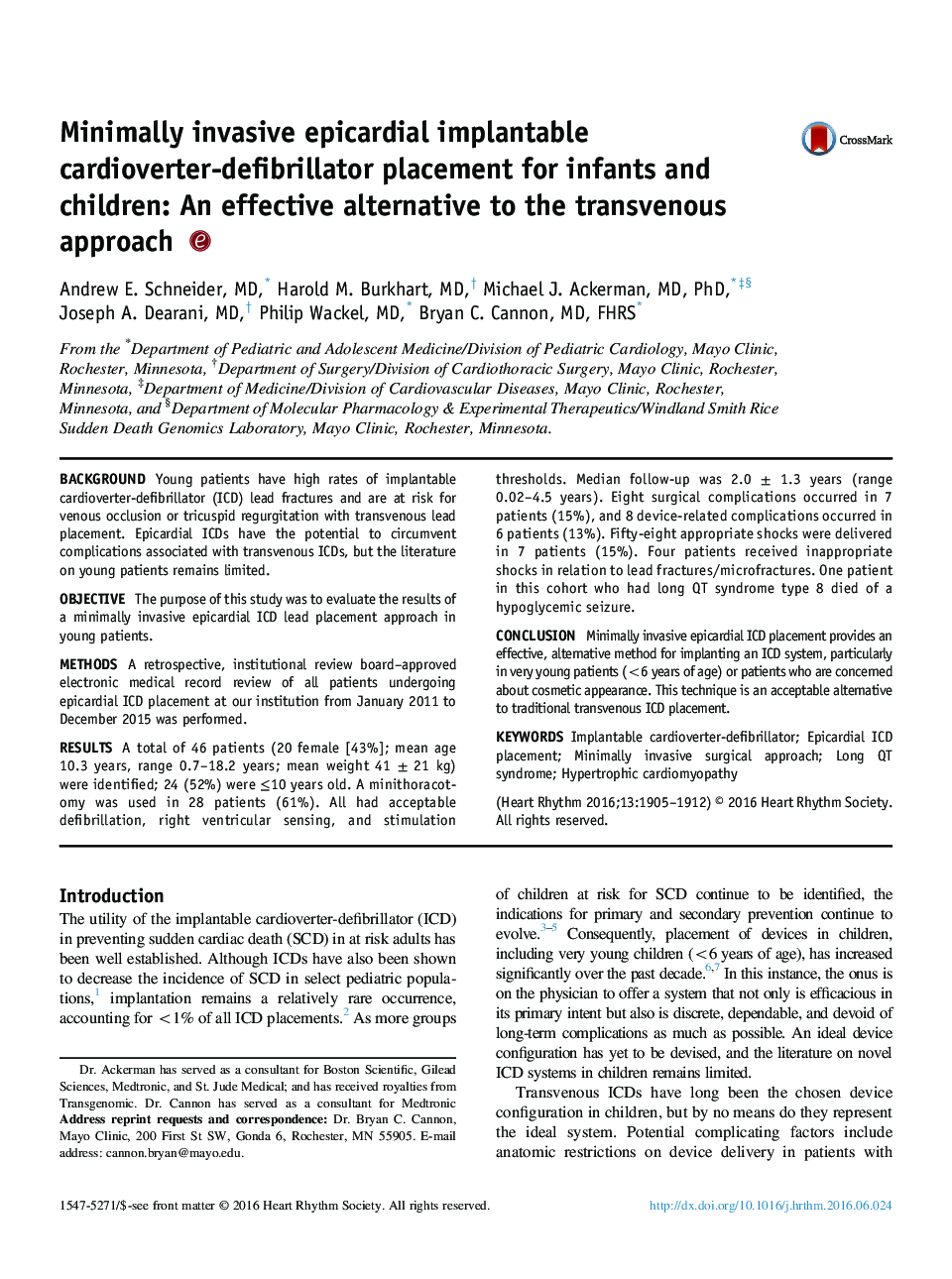| کد مقاله | کد نشریه | سال انتشار | مقاله انگلیسی | نسخه تمام متن |
|---|---|---|---|---|
| 2921685 | 1405418 | 2016 | 8 صفحه PDF | دانلود رایگان |
BackgroundYoung patients have high rates of implantable cardioverter-defibrillator (ICD) lead fractures and are at risk for venous occlusion or tricuspid regurgitation with transvenous lead placement. Epicardial ICDs have the potential to circumvent complications associated with transvenous ICDs, but the literature on young patients remains limited.ObjectiveThe purpose of this study was to evaluate the results of a minimally invasive epicardial ICD lead placement approach in young patients.MethodsA retrospective, institutional review board–approved electronic medical record review of all patients undergoing epicardial ICD placement at our institution from January 2011 to December 2015 was performed.ResultsA total of 46 patients (20 female [43%]; mean age 10.3 years, range 0.7–18.2 years; mean weight 41 ± 21 kg) were identified; 24 (52%) were ≤10 years old. A minithoracotomy was used in 28 patients (61%). All had acceptable defibrillation, right ventricular sensing, and stimulation thresholds. Median follow-up was 2.0 ± 1.3 years (range 0.02–4.5 years). Eight surgical complications occurred in 7 patients (15%), and 8 device-related complications occurred in 6 patients (13%). Fifty-eight appropriate shocks were delivered in 7 patients (15%). Four patients received inappropriate shocks in relation to lead fractures/microfractures. One patient in this cohort who had long QT syndrome type 8 died of a hypoglycemic seizure.ConclusionMinimally invasive epicardial ICD placement provides an effective, alternative method for implanting an ICD system, particularly in very young patients (<6 years of age) or patients who are concerned about cosmetic appearance. This technique is an acceptable alternative to traditional transvenous ICD placement.
Journal: Heart Rhythm - Volume 13, Issue 9, September 2016, Pages 1905–1912
